Given the multiple rifts already exposed between state and national Republican officeholders and the Trump administration, it hardly seems as though the administration stands to gain from stirring up more antagonism. Yet that’s what it seems they are doing when it comes to granting states flexibility in implementing the ACA.
In general, waivers provide policymaking opportunities for governors and presidential administrations alike. Governors may use waivers to revise federal policies—in this case, health care—in their states, and presidents and their administrations may use waivers to pursue their own policy goals. As one of us has argued in other work, approving policy changes via waivers may be attractive to the president when Congress frustrates his legislative agenda if the president has a large number of allies among the nation’s governors who may be willing to implement waivers that align with the president’s policy goals. President Trump currently finds himself in such a scenario. After months of failed “repeal and replace” efforts but with thirty-four governors in their party, the Trump administration may see waivers as a viable, alternate route to achieve health care reform.
Indeed, until recently, it appeared that the Trump administration was planning to use Section 1332 waivers from the Affordable Care Act in this manner. Under the Affordable Care Act, governors (contingent on the approval of state legislatures) may submit applications to HHS for flexibility under federal law in order to implement new or different programs within their state. Often, a presidential administration will indicate publicly its willingness to approve waivers and will signal what kind of policies it is open to approving via waivers. In this case, former Secretary of Health and Human Services Tom Price issued a letter to governors in March 2017 inviting Section 1332 waiver applications and sketching out the administration’s policy priorities, followed by a checklist to outline the application steps.
The authority to approve Section 1332 waivers lies within the executive branch—specifically, with Secretaries of the Department of Health and Human Services and the Department of the Treasury. In the typical course of events, we would expect the Secretaries to approve Section 1332 applications that are consistent with the administration’s goals, perhaps after back-and-forth with governors’ offices over details of specific waiver applications.
So far, however, at least three states, including two with Republican governors, have had experiences with the waiver process that veer from these expectations.
- In late September Oklahoma, which had been “encouraged by federal communication to Governors promoting the use of 1332 State Innovation Waivers,” withdrew its application for a waiver, blaming “the failure of Departments [of the Treasury and of Health and Human Services] to provide timely waiver approval.”
- Iowa’s application for a waiver, which would make conservative changes so ambitious that several experts question whether they are even permitted under the ACA, stands in limbo. The Washington Post reported that President Trump directed CMS to deny the waiver in August, despite the fact that it would allow Iowa to implement some policies similar to ones called for by congressional Republicans earlier this year. While state officials maintain no final decision has been made, they have hoped to have the waiver in place when sign up period for consumers to purchase insurance for 2018 begins in just a few weeks, on November 1.
- In Minnesota, which recently had a 1332 waiver approved, state officials were not informed until late in the application process that approval of their application to use funding for a state-based reinsurance program would also mean a reduction in funding for a separate program for low-income residents. Minnesota currently has a Democratic governor, however, so friction here is perhaps less surprising than in the case of Oklahoma and Iowa’s waivers.
If the Trump administration had deliberately changed course with respect to Section 1332 waivers, such a strategy would not be unprecedented. Previous administrations have made changes to their own waiver approval processes, revising aspects of the process and/or emphasizing new substantive goals. For example, during President Clinton’s first term, about a year after initially outlining the process for reviewing certain welfare waivers, the Secretary of HHS offered an expedited review process for waivers that aligned with five policies endorsed by the administration. Under President George W. Bush, the Department of Education began to offer substantive waivers from the No Child Left Behind Act during President Bush’s second term after refusing to do so previously
However, the Trump administration has not issued any formal, public announcements or guidance indicating ambivalence about approving Section 1332 waivers. And yet, as described above, several waiver applications otherwise on track for approval have apparently hit roadblocks.
So how might we explain the snags, especially in Republican-led states like Oklahoma and Iowa? As others have suggested, the inconsistent approach to soliciting and approving waivers may well be evidence of an attempt at destabilization by any means necessary. If Trump does not want to concede that ACA is here to stay at least for now, granting these waivers may seem to him like an admission of defeat. Choosing to destabilize the law rather than concede defeat could explain some of the bumps in the road experienced by states trying to gain approval of their waivers.
If the goal is to keep alive the Republican hope to repeal the ACA, blocking Section 1332 waivers may in fact be consistent with that strategy. If approved, these waivers may help states mitigate some of the critiques levied by ACA opponents. Granting flexibility from the law may provide something of a safety valve, releasing some of the pressure on Republican governors and state legislators. If the Trump administration is holding out hope for a repeal of the ACA, they may worry that granting these waivers decreases political support for future repeal campaigns.
But is this concern enough to justify torpedoing waiver applications following lengthy negotiations with co-partisans (not to mention aggravating uncertainty over the cost and availability of health care for Americans)? The ACA requires the involvement of state legislatures in the waiver process in a way that’s unusual for federal laws that allow for waivers. State officeholders, then, are likely to be particularly invested in the outcome of their applications. Ultimately, soliciting but not approving 1332 waivers represents a particularly politically risky form of destabilization-by-any-means-necessary for the Trump administration.
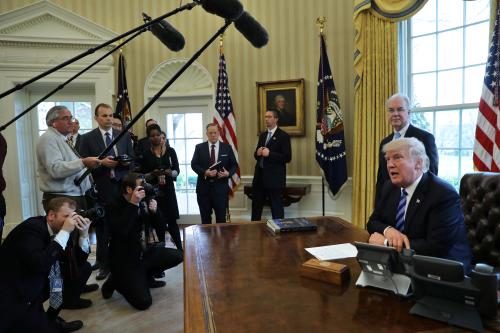
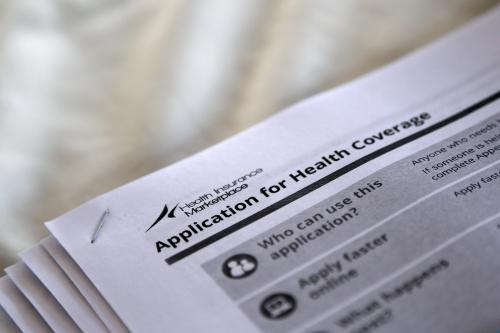
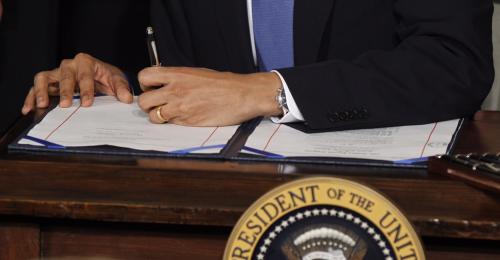
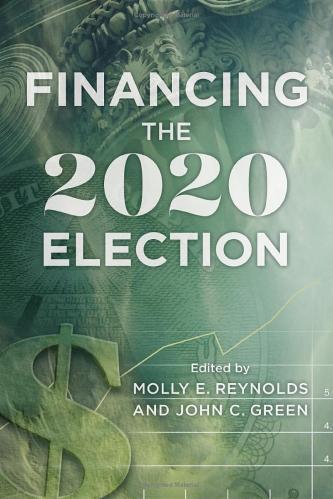
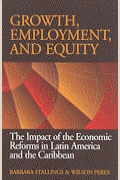






Commentary
Mixed signals for states on their role in Obamacare reform
October 12, 2017